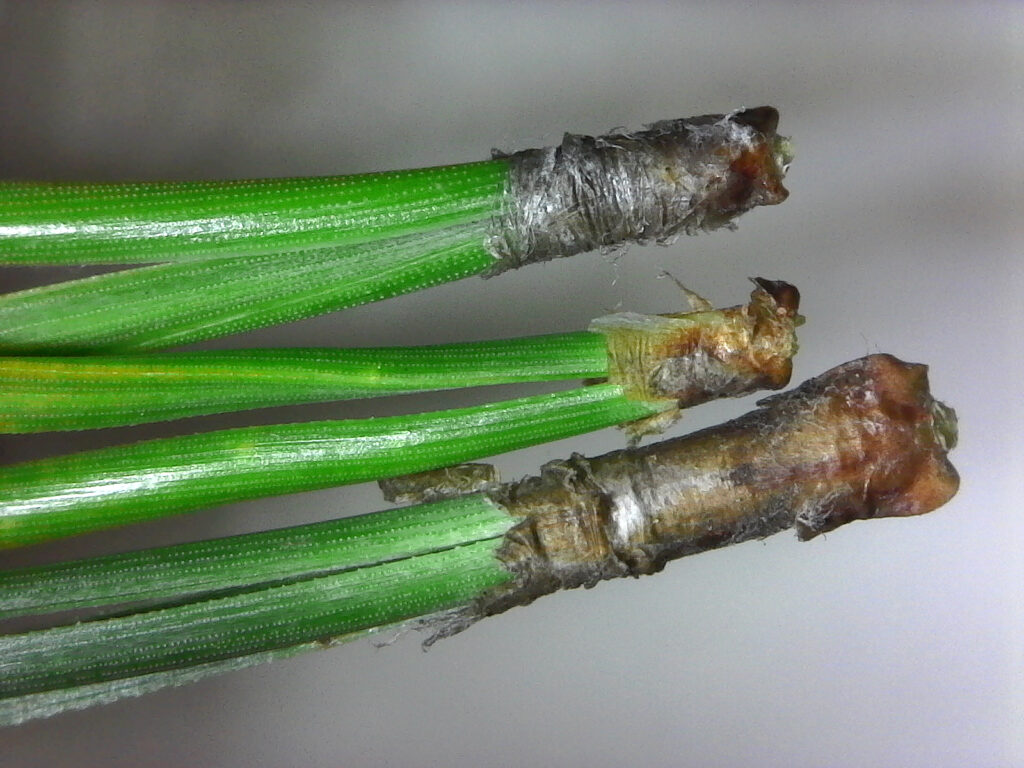Table Mountain Pine and Two Close Relatives
go.ncsu.edu/readext?840031
en Español / em Português
El inglés es el idioma de control de esta página. En la medida en que haya algún conflicto entre la traducción al inglés y la traducción, el inglés prevalece.
Al hacer clic en el enlace de traducción se activa un servicio de traducción gratuito para convertir la página al español. Al igual que con cualquier traducción por Internet, la conversión no es sensible al contexto y puede que no traduzca el texto en su significado original. NC State Extension no garantiza la exactitud del texto traducido. Por favor, tenga en cuenta que algunas aplicaciones y/o servicios pueden no funcionar como se espera cuando se traducen.
Português
Inglês é o idioma de controle desta página. Na medida que haja algum conflito entre o texto original em Inglês e a tradução, o Inglês prevalece.
Ao clicar no link de tradução, um serviço gratuito de tradução será ativado para converter a página para o Português. Como em qualquer tradução pela internet, a conversão não é sensivel ao contexto e pode não ocorrer a tradução para o significado orginal. O serviço de Extensão da Carolina do Norte (NC State Extension) não garante a exatidão do texto traduzido. Por favor, observe que algumas funções ou serviços podem não funcionar como esperado após a tradução.
English
English is the controlling language of this page. To the extent there is any conflict between the English text and the translation, English controls.
Clicking on the translation link activates a free translation service to convert the page to Spanish. As with any Internet translation, the conversion is not context-sensitive and may not translate the text to its original meaning. NC State Extension does not guarantee the accuracy of the translated text. Please note that some applications and/or services may not function as expected when translated.
Collapse ▲Three North Carolina foothills and mountain pine species that can be a little confusing to sort out – at first – are table mountain pine (Pinus pungens), pitch pine (P. rigida) and Virginia pine (P. virginiana). Multiple characteristics can be used to separate these species one from another, but this brief note will focus just on the individual bundles of needles, known as fascicles. Both table mountain pine and Virginia pine have needles in fascicles of 2, whereas pitch pine has fascicles of 3. The needles come together at the base within a fascicle sheath. Fascicle sheaths can be somewhat characteristic in both appearance and length, as seen in the image below. We’ll have more commentary on table mountain pine, pitch pine and Virginia pine in an upcoming post.

In one recent sample, table mountain pine fascicle sheaths (top) averaged 4-5 mm in length, as
compared with Virginia pine (middle) at around 3-4 mm. PItch pine (bottom) had much longer
fascicles, generally within 6-9 mm; you can also just make out a third needle underneath the
uppermost two. The fascicle sheath of table mountain pine is unique in that it has the appearance
of being wound with very fine thread.




